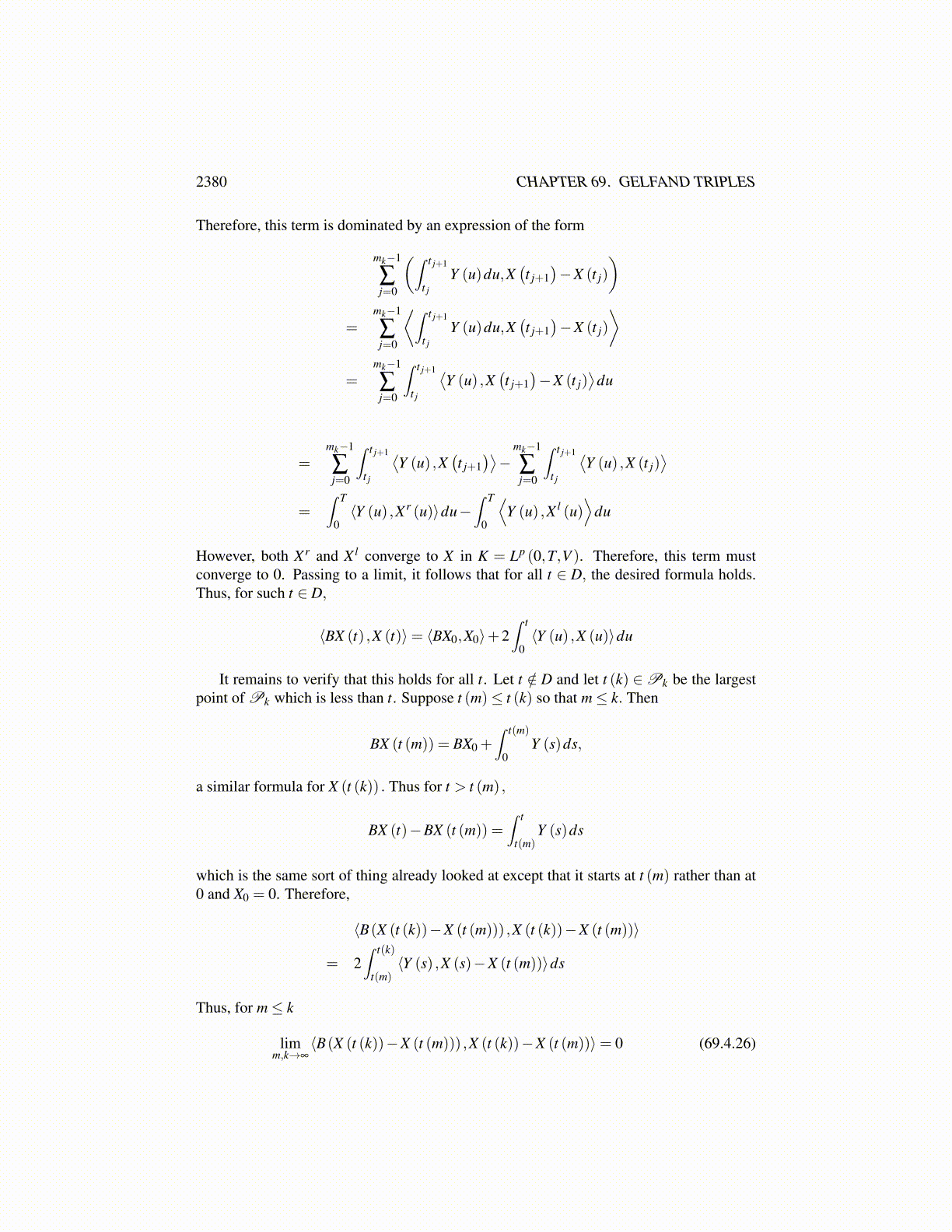
2380 CHAPTER 69. GELFAND TRIPLES
= 2⟨BX (t) ,X (t)⟩−2⟨BX (s) ,X (t)⟩−⟨BX (t) ,X (t)⟩+2⟨BX (s) ,X (t)⟩−⟨BX (s) ,X (s)⟩
= ⟨BX (t) ,X (t)⟩−⟨BX (s) ,X (s)⟩
Thus⟨BX (t) ,X (t)⟩−⟨BX (s) ,X (s)⟩
= 2∫ t
s⟨Y (u) ,X (t)⟩du−⟨B(X (t)−X (s)) ,(X (t)−X (s))⟩
Lemma 69.4.4 In the above situation,
supt∈[0,T ]
⟨BX (t) ,X (t)⟩ ≤C (∥Y∥K′ ,∥X∥K)
Also, t→ BX (t) is weakly continuous with values in W ′.
Proof: From the above formula applied to the kth partition of [0,T ] described above,
⟨BX (tm) ,X (tm)⟩−⟨BX0,X0⟩=m−1
∑j=0
⟨BX(t j+1
),X(t j+1
)⟩−⟨BX (t j) ,X (t j)
⟩
=m−1
∑j=0
2∫ t j+1
t j
⟨Y (u) ,X
(t j+1
)⟩du−
⟨B(X(t j+1
)−X (t j)
),X(t j+1
)−X (t j)
⟩=
m−1
∑j=0
2∫ t j+1
t j
⟨Y (u) ,X rk (u)⟩du−
⟨B(X(t j+1
)−X (t j)
),X(t j+1
)−X (t j)
⟩Thus, discarding the negative terms and denoting by Pk the kth of these partitions,
supt j∈Pk
⟨BX (t j) ,X (t j)
⟩≤ ⟨BX0,X0⟩+2
∫ T
0|⟨Y (u) ,X r
k (u)⟩|du
≤ ⟨BX0,X0⟩+2∫ T
0∥Y (u)∥V ′ ∥X
rk (u)∥V du
≤ ⟨BX0,X0⟩+2(∫ T
0∥Y (u)∥p′
V ′ du)1/p′(∫ T
0∥X r
k (u)∥pV du
)1/p
≤C (∥Y∥K′ ,∥X∥K)
because these partitions are chosen such that
limk→∞
(∫ T
0∥X r
k (u)∥pV
)1/p
=
(∫ T
0∥X (u)∥p
V
)1/p
and so these are bounded. This has shown that for the dense subset of [0,T ] , D≡ ∪kPk,
supt∈D⟨BX (t) ,X (t)⟩<C (∥Y∥K′ ,∥X∥K)